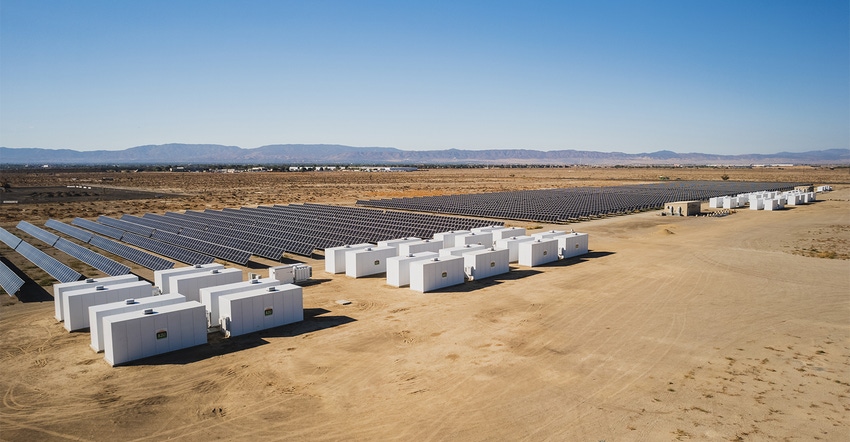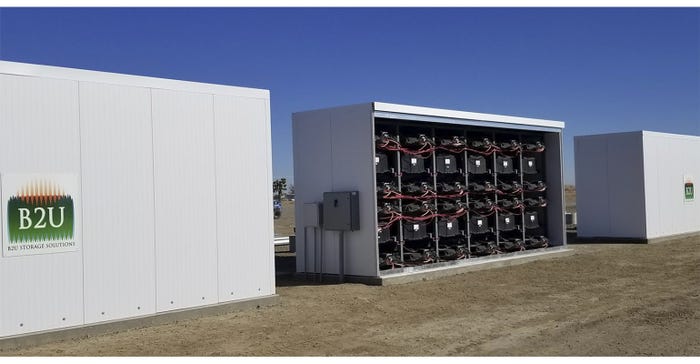Can EV Batteries Be Reused Profitably?
Yes, and doing so could be the key to a more sustainable battery industry: B2U Storage Solutions’ CEO explains.
May 10, 2023

The electric vehicle (EV) revolution is well underway, with more and more drivers choosing to make the switch to zero-emissions cars every year. However, as the popularity of EVs continues to grow, concerns about their sustainability and environmental impact are also increasing. Specifically, the disposal of EV batteries looms as a major sustainability challenge in the industry.
While EV battery recycling is a leading solution for reducing waste and pollution, there is significant potential in battery reuse—or second-life—to further augment batteries’ lifecycles.
One company that is heavily invested in battery reuse is B2U Storage Solutions, which leverages proprietary technology, like its nascent EV Pack Storage (EPS) technology in tandem with second-life EV batteries to increase value and efficiency at scale.
Battery Technology had the chance to interview Freeman Hall, CEO and Co-Founder of B2U, to hear about his thoughts on battery reuse, its major challenges, and how B2U is making battery reuse a reality.
Can you explain what battery reuse is and what its benefits are as compared to battery recycling?
B2U Storage Solutions CEO Freeman Hall: When the EV battery pack performance drops to an “unacceptable” level from the owner’s perspective, the vehicle reaches its end of life, or there is damage to the battery or vehicle, then the EV’s battery pack is traditionally removed from the vehicle and shipped to a recycling facility. However, often times it’s the case that these battery packs may still have significant useful capacity remaining for less demanding use cases such as stationary storage applications.
This is where battery reuse comes in. Battery reuse in stationary storage applications is not an alternative to recycling; rather, it is a deferral of recycling to derive maximum residual value from the battery prior to recycling. Reuse is environmentally beneficial and economically attractive, delivering incremental value above and beyond the battery’s recycling value.
Ultimately all second-life batteries must be recycled. In the meantime, the batteries’ reuse generates value well beyond the cost of deferring recycling.
What are the major challenges with battery reuse?
Hall: There are two different sets of challenges depending on module-level reuse or pack level reuse.
Module level reuse requires pack removal from a vehicle, disassembly down to module level, module testing and capacity matching, then reassembly of the modules into stacks at the appropriate voltage level, and a 3rd party Battery Management System (BMS) software used to control the modules. Not all battery packs can be disassembled, as some are potted in thermal epoxy, preventing disassembly.
Pack level reuse requires a method to safely connect the packs to achieve voltage requirements, an interface to enable the pack to operate as if it was in the vehicle where the full battery pack is reused, and a controller to maximize yields of varying pack capacities working together if batteries are deployed in series and parallel configurations for higher capacity uses.
A significant challenge when it comes to battery pack reuse is enabling direct pack communication with the original battery pack BMS. Modern battery packs communicate directly with several other systems in the vehicle and the BMS may not operate properly if certain protocols are not followed. So enabling effective communication with the pack’s BMS is a central challenge to reusing the entire battery pack.
Can you describe some of the things that B2U Storage Solutions is doing to address some of these challenges?
Hall: B2U utilizes EV battery packs as-is, directly removed from the vehicle. Essentially, this eliminates repurposing costs by deploying the packs using B2U’s patented EV Pack Storage (EPS) system that enables batteries to be deployed in a “plug and play” fashion in large-scale energy storage applications.
B2U’s EPS features a pack interface which serves to fully isolate the battery pack, such that they can be safely connected in series strings. This pack interface is capable of simulating the signals necessary for the native BMS to operate independently of the vehicle in a second-life application.
Additionally, B2U’s EPS offers a cabinet controller, which maximizes yields of varying pack capacities by disconnecting lower-capacity packs that have become fully charged, enabling the remaining packs to continue charging. Similarly, disconnecting lower capacity packs that have become fully discharged, enables the remaining packs to continue discharging.
B2U is currently working with several automotive OEMs to deploy battery packs in second-life applications. For example, B2U’s hybrid solar and storage facility features 27MWh of storage capacity and has deployed 1,300 Honda and Nissan EV batteries. The facility has been operational since 2020, and increasing capacity in phases. This deployment showcases the ability of EV batteries to be reused safely in a second-life application and deliver substantial value before the batteries are recycled
Can you give us more detail about your EPS technology and the role it plays in battery reuse?
Hall: B2U’s EV Pack Storage (EPS) technology consists of hardware and software systems that, when combined with B2U’s Energy Management System (EMS), allow second-life batteries of varying capacities to be safely and effectively used for large-scale stationary storage applications.

Within this, there are a number of key components, including our transportable EPS cabinet enclosure, our EPS Pack Interface, and our EPS Cabinet Controller.
Our transportable EPS cabinet enclosure enables up to 32 EV packs to be deployed in a single cabinet without modification in a climate-controlled operating environment with hazard detection built in.
The EPS Pack Interface provides the necessary communication and power isolation to allow EV battery packs to operate in high-voltage series strings while also providing the controls and communications needed to operate the battery pack outside of the vehicle.
Finally, the EPS Cabinet Controller provides real-time data acquisition, maintains all battery operating parameters within safety limits, and manages climate control and hazard detection systems. The cabinet controller maintains voltage balance across series strings of battery packs, maximizes yield management across battery packs with varying capacities, and provides integration with other EPS cabinets as well as the entire system.
Additionally, the EMS interacts with the grid operator, based on market bids, assigns the Dispatch Operating Target (DOT) workload across the system allocating plant-level charge and discharge across all cabinets while providing real-time monitoring and controls at the battery and plant level, logic and diagnostics capability, identifying warnings/faults to dispatch service technicians if needed.
Where do you see the industry in 10 years? How important is battery reuse going to be?
Hall: Significantly larger, with many gigawatt hours (GWh) of second-life EV battery capacity in reuse applications.
With demand for EVs increasing, battery reuse will only become a more essential part of the lifecycle of batteries by enhancing the value of the EV battery before recycling. The EPA’s recently proposed auto emissions regulations are just one of many signals that electric vehicles are and will continue to be a critical component of infrastructure in the US and across the globe. With the increased demand for EVs, there will be a need for infrastructure that enhances EV batteries’ lifecycles and makes the technology more sustainable and cost-effective.
The value of second-life battery technology will continue to increase as more EV batteries complete their automotive use, and more organizations implement reuse within a framework of closed-loop lifecycle management where batteries are recycled after reuse and the raw materials are used in the next generation of batteries.
About the Author(s)
You May Also Like



